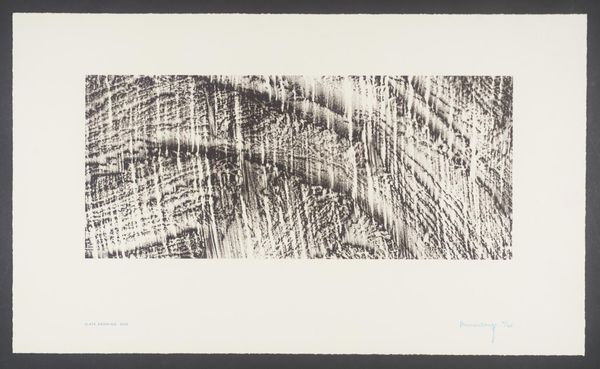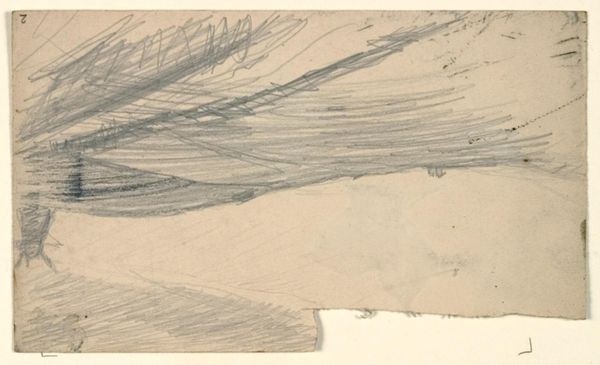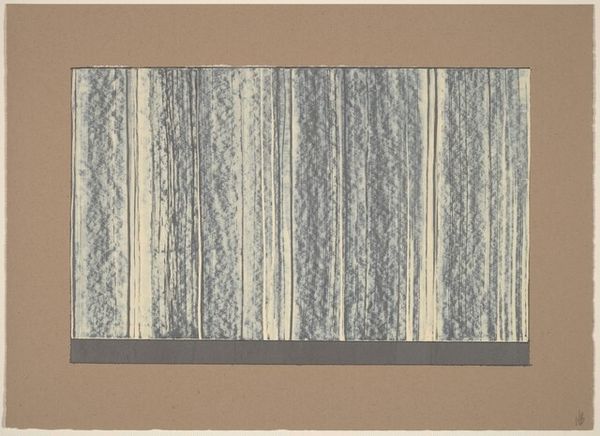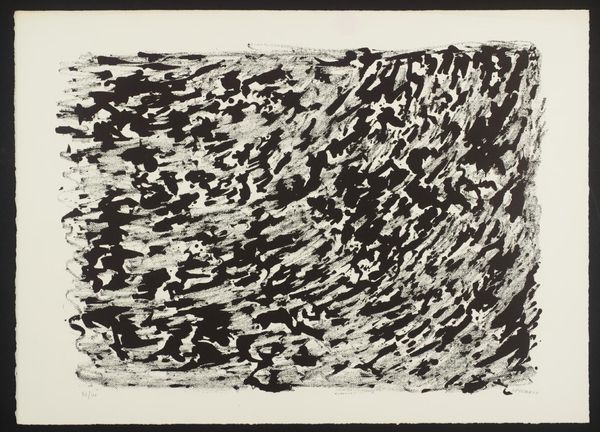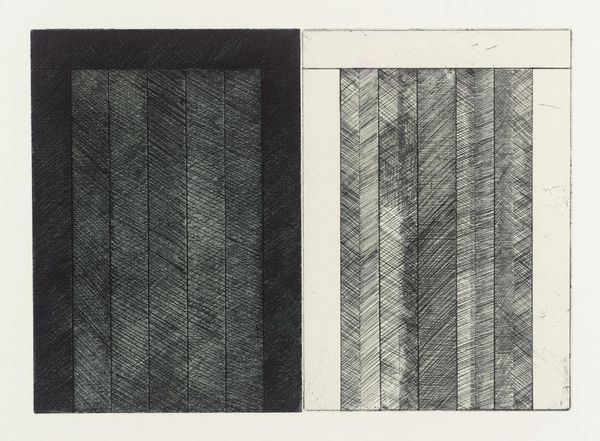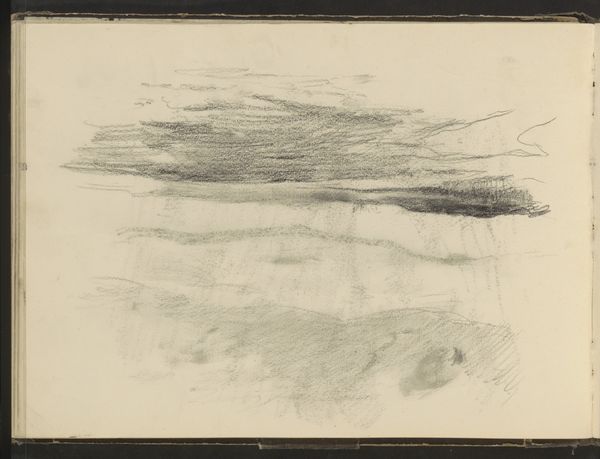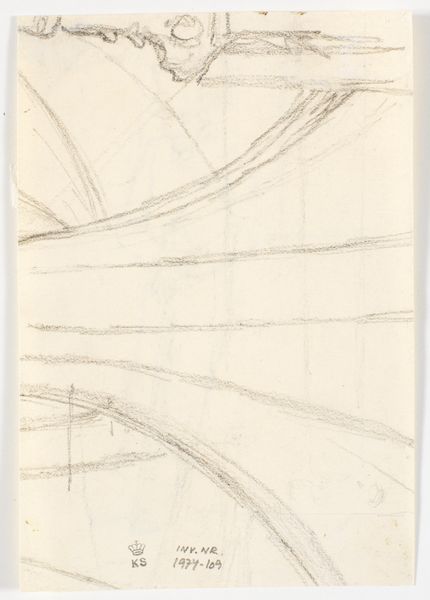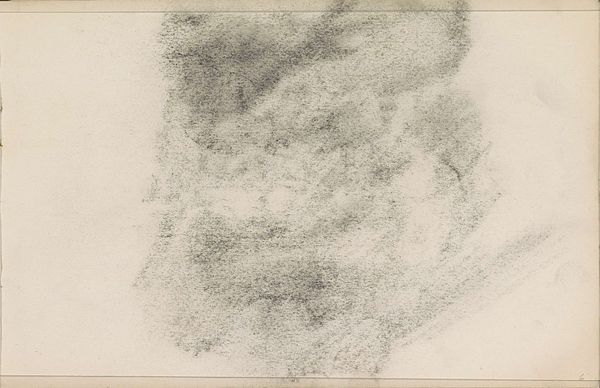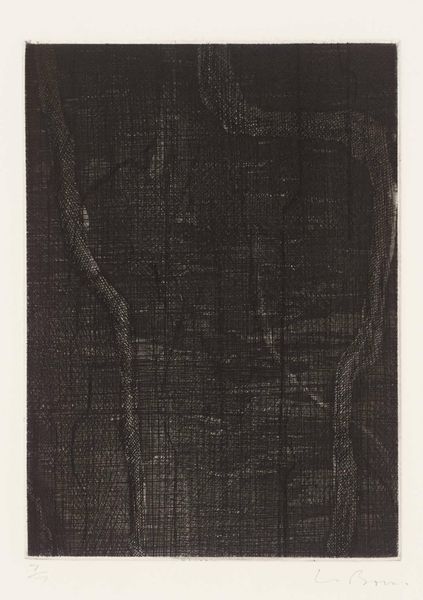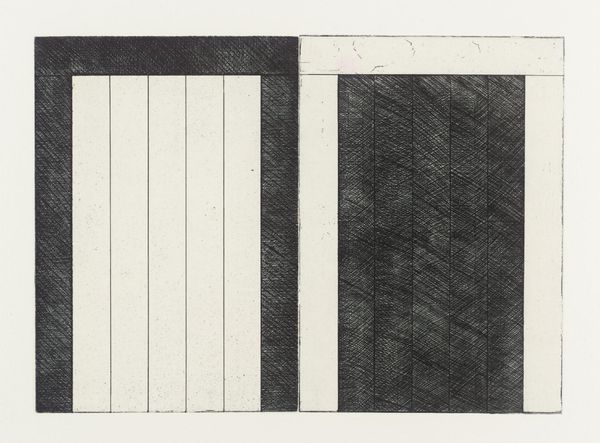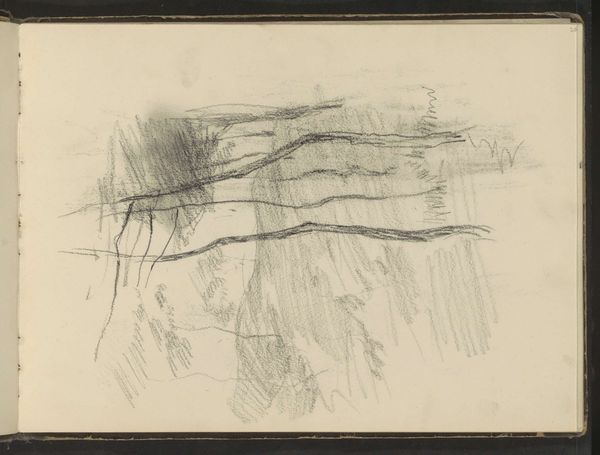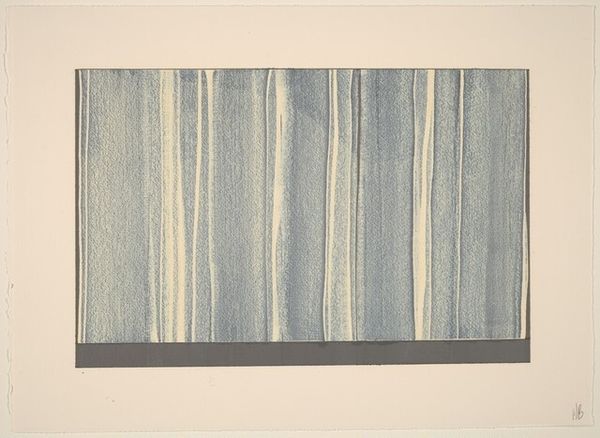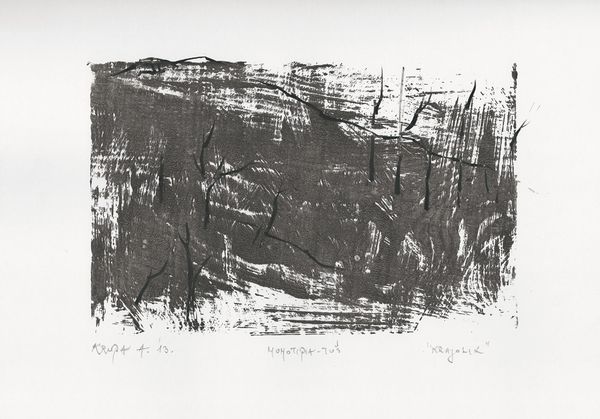
Dimensions: image: 240 x 500 mm
Copyright: © Richard Long | CC-BY-NC-ND 4.0 DEED, Photo: Tate
Curator: Richard Long’s “Slate Drawing Two” presents a fascinating study in texture and form, achieved through what appears to be a minimalist approach. Editor: It gives the impression of erosion, like rain streaking down an ancient wall, stripping away layers of time and revealing the deeper structures. Curator: Precisely, the parallel lines create a visual rhythm. It reminds me of Agnes Martin's grids, but there's a raw, almost geological quality here. Editor: Given Long's work with Land Art, I'm curious about the social implications. Who has access to these landscapes, and who benefits from their resources? Curator: An important question. However, the drawing's strength lies in its inherent formal qualities: the interplay of light and shadow, the tactile surface. Editor: Agreed, but art doesn't exist in a vacuum. The context of its creation and reception shapes its meaning, whether we choose to acknowledge it or not. Curator: An elegant work, regardless, that invites us to contemplate the nature of mark-making. Editor: A compelling piece, prompting us to consider our relationship with both the land and its inhabitants.
Comments
Join the conversation
Join millions of artists and users on Artera today and experience the ultimate creative platform.
tate 7 months ago
⋮
This is one of a suite of four screenprints (see Tate P78717 and P78719-20) Long made from direct contact with the surfaces of slabs of slate and limestone. Slate Drawing Two, as its title indicates, is based on a pencil rubbing taken from textured slate. The drawing was turned into a screenprint using a photo-separation process and printed using repeated additions of ink until the image had reached the tonal balance required by the artist. The portfolio was printed by Advanced Graphics, London and published by Ridinghouse Editions, London, in an edition of forty plus ten artist’s proofs. Tate’s copy is the seventh in the edition.
